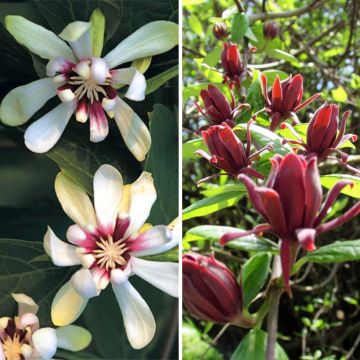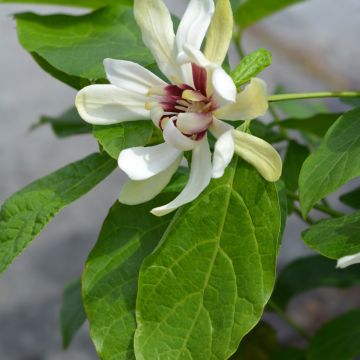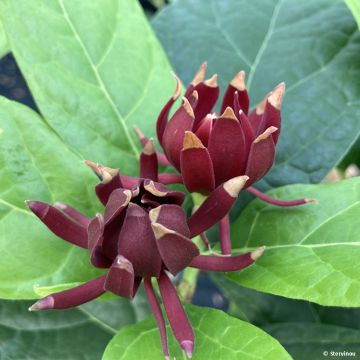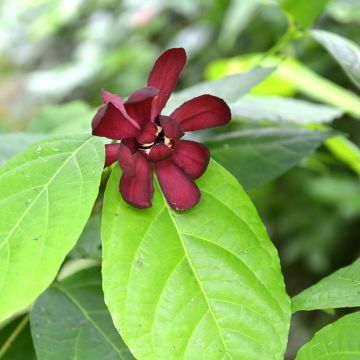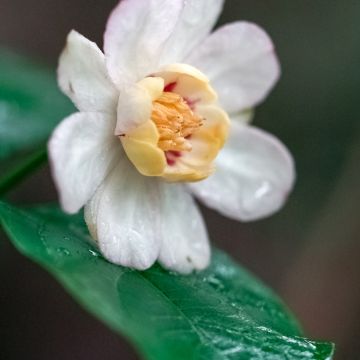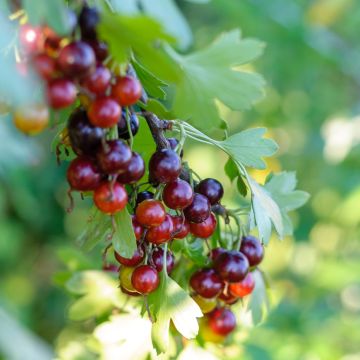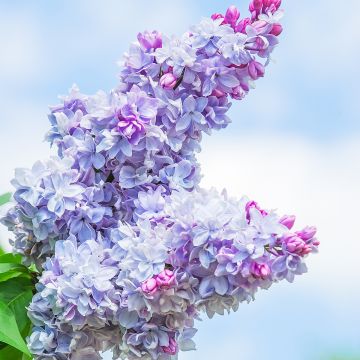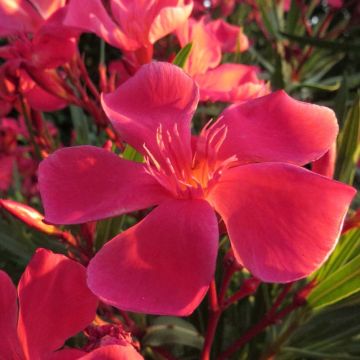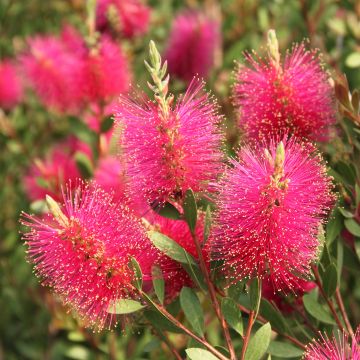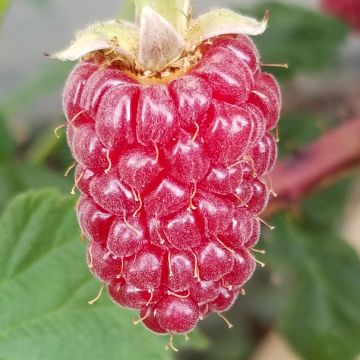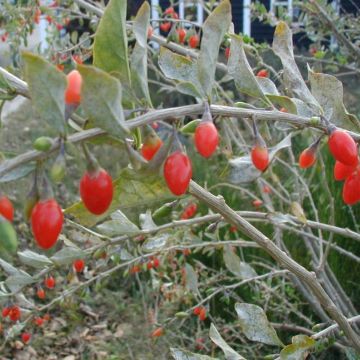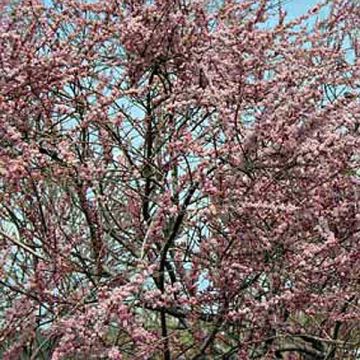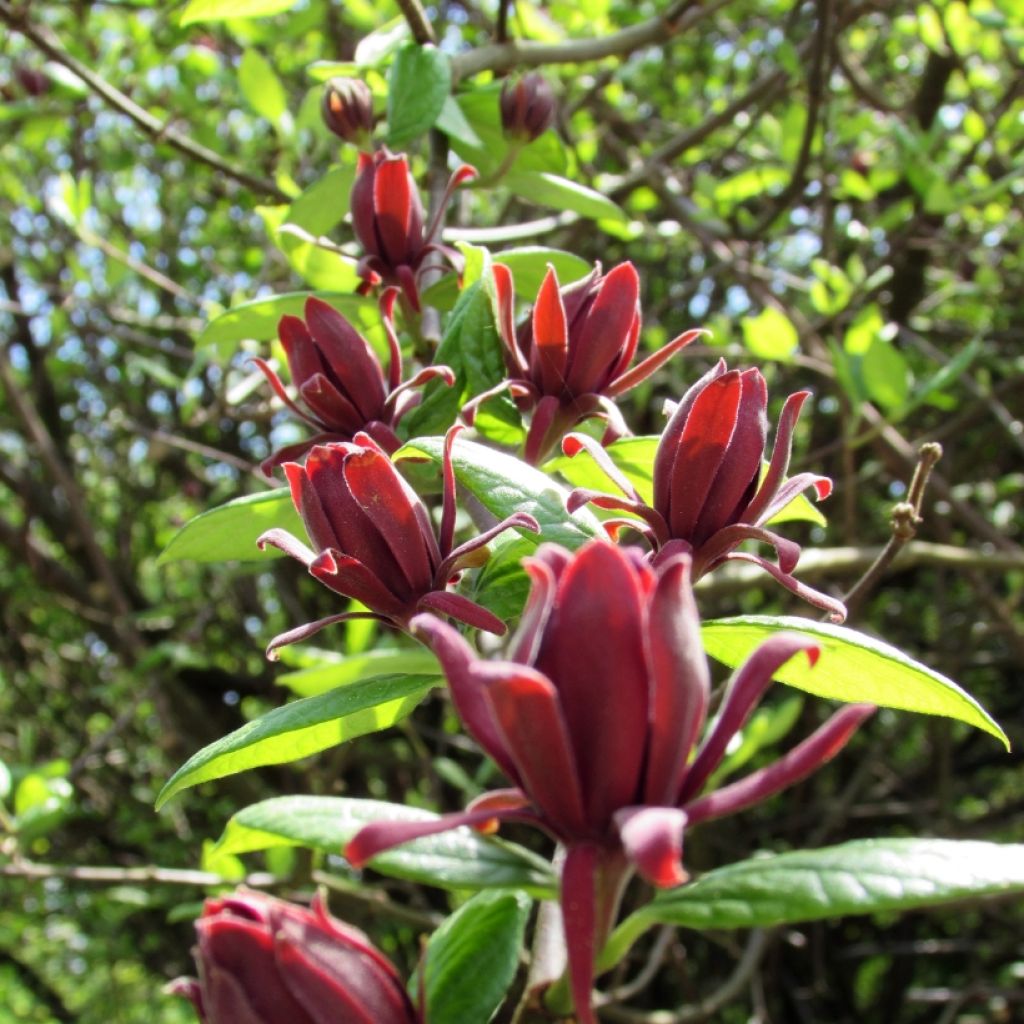

Calycanthus floridus - Sweetshrub
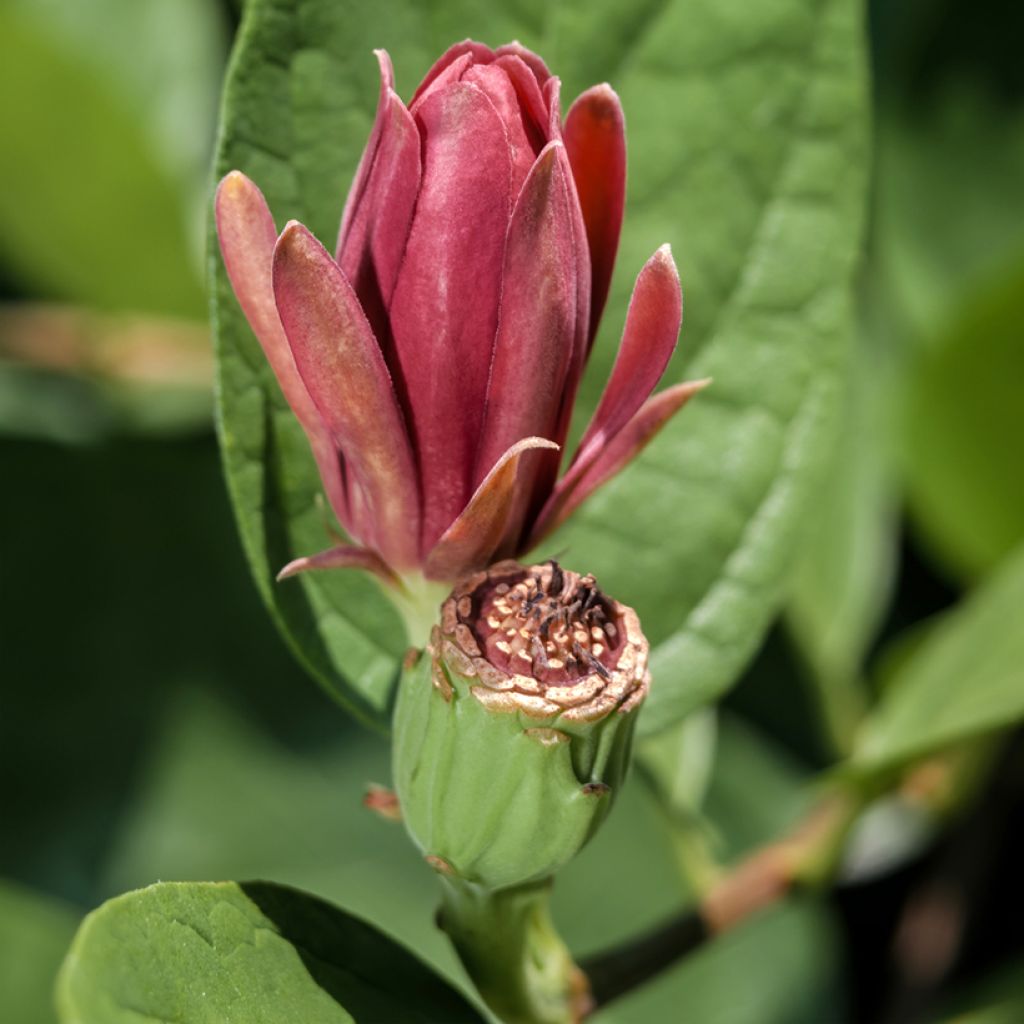

Calycanthus floridus - Sweetshrub


Calycanthus floridus - Sweetshrub
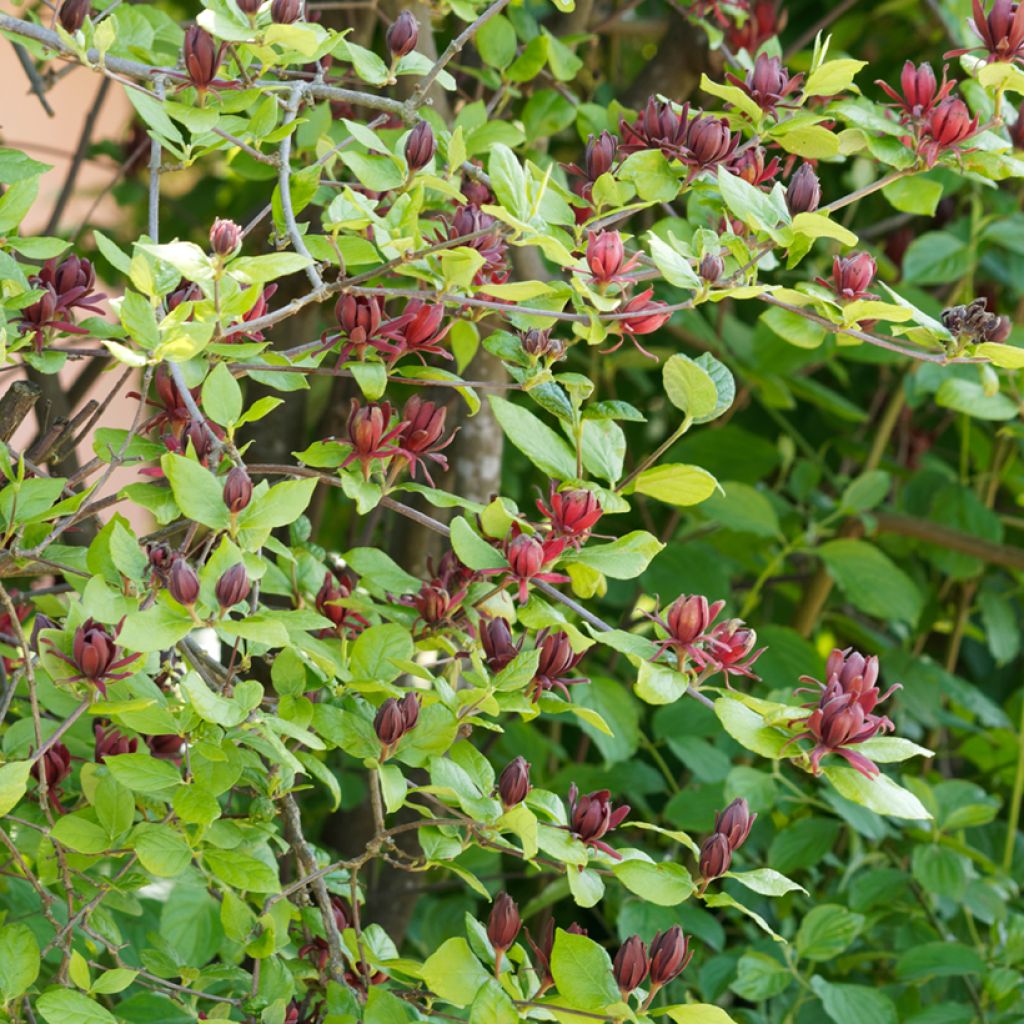

Calycanthus floridus - Sweetshrub
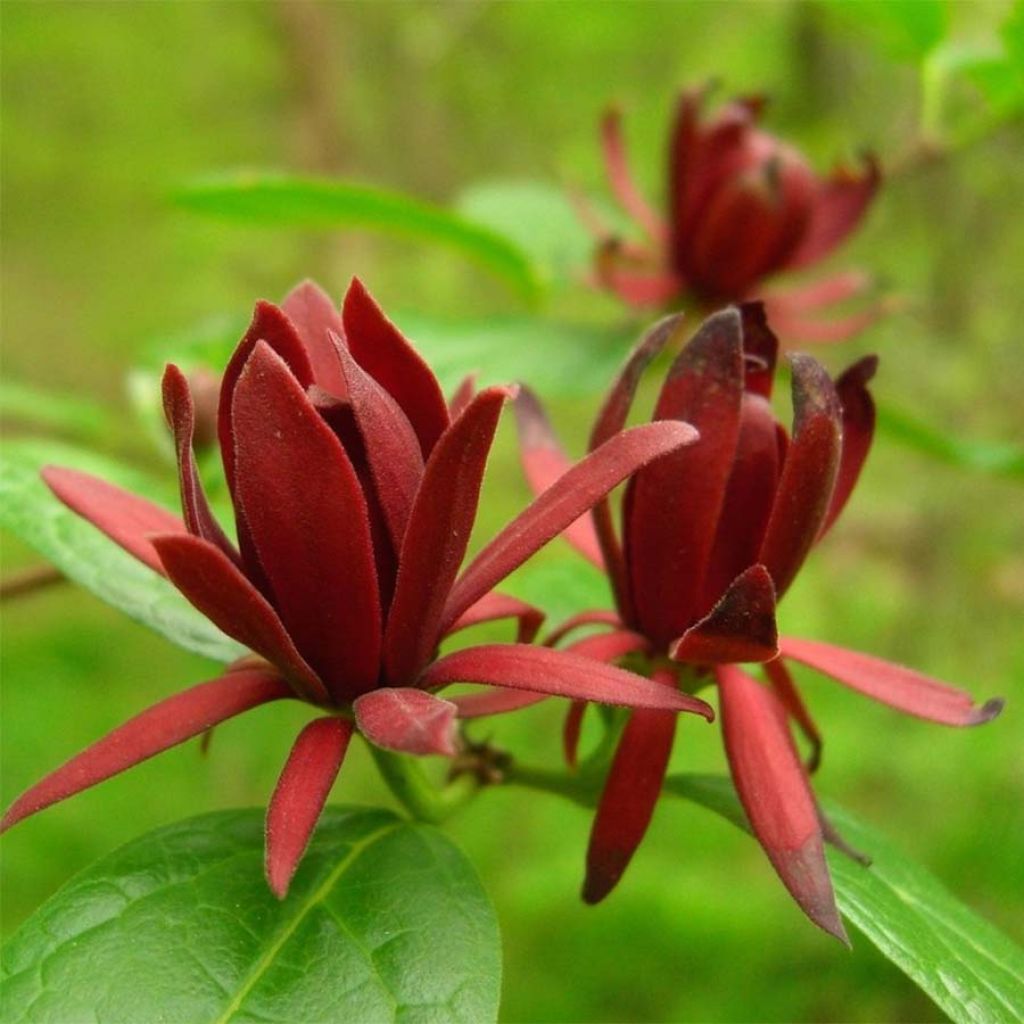

Calycanthus floridus - Sweetshrub
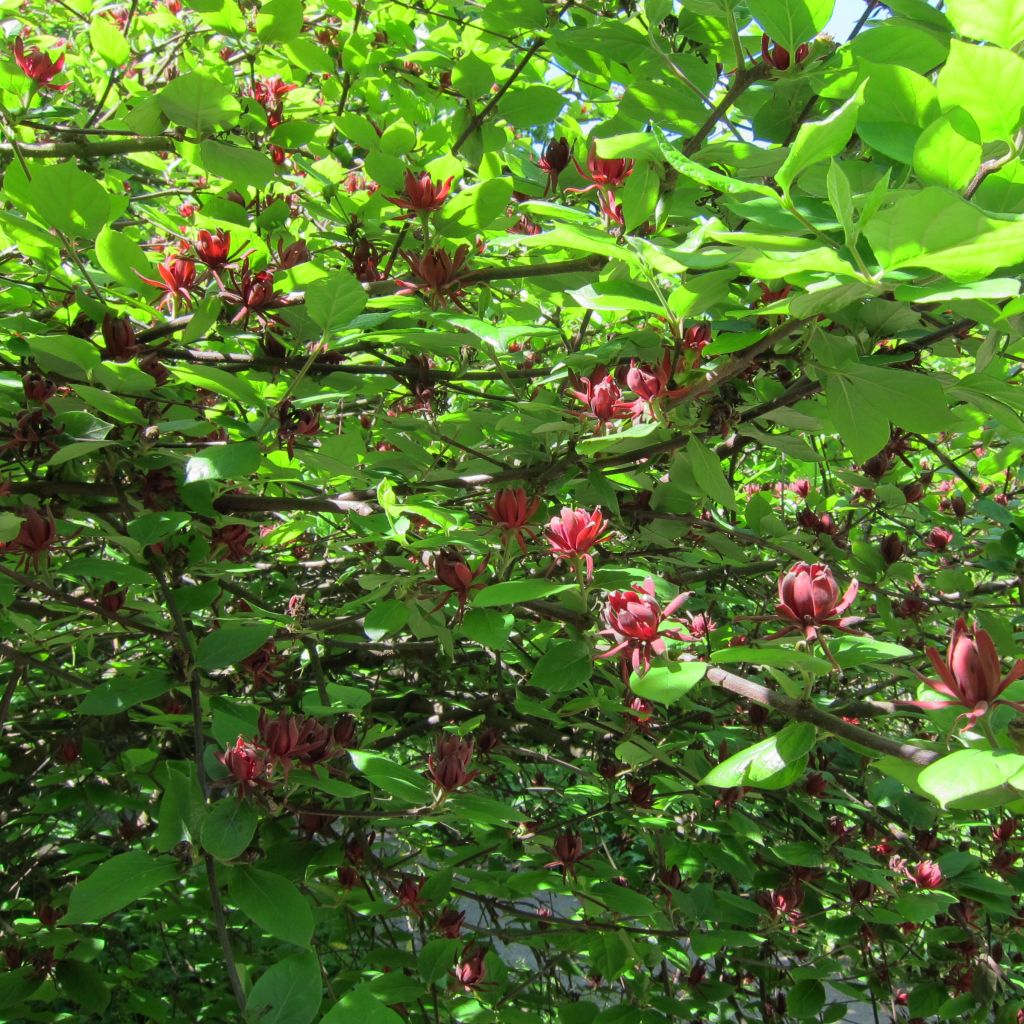

Calycanthus floridus - Sweetshrub
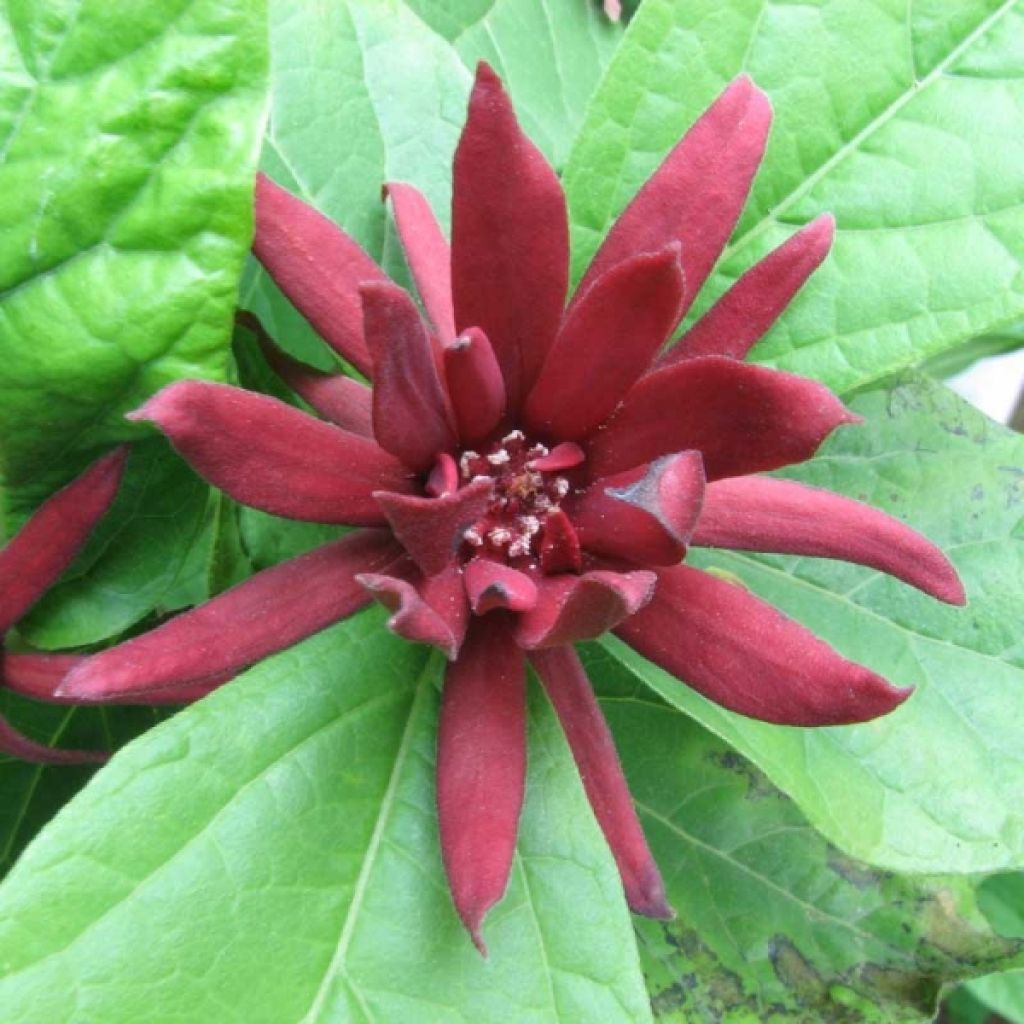

Calycanthus floridus - Sweetshrub


Calycanthus floridus - Sweetshrub


Calycanthus floridus - Sweetshrub
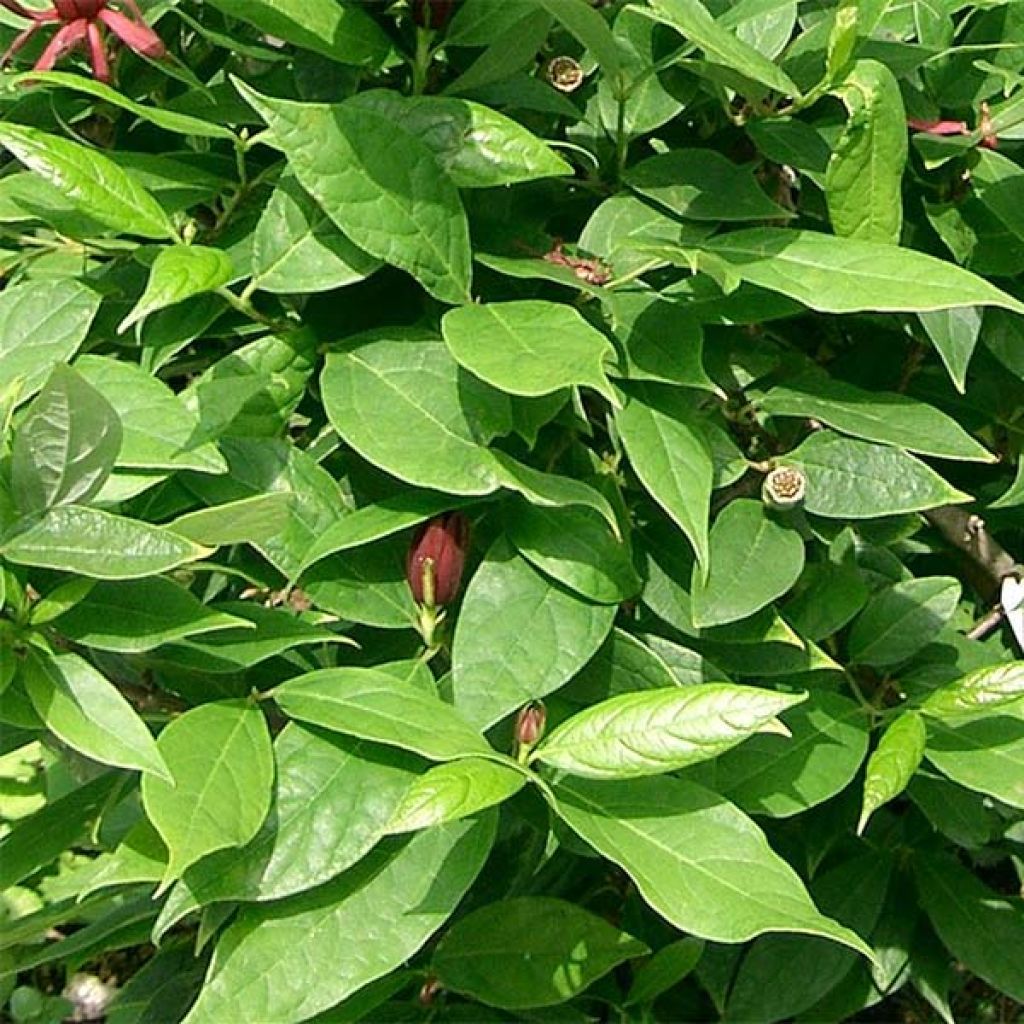

Calycanthus floridus - Sweetshrub
Calycanthus floridus - Sweetshrub
Calycanthus floridus
Carolina allspice, sweetshrub, strawberry bush, spicebush
Hello, I have planted the calycathus received at the end of August. Since then, it is losing all its leaves. Is it normal considering the temperatures have dropped? Should I put wood chips on the soil for the winter? Thank you in advance for your answers. Kind regards.
Aline, 22/11/2022
Special offer!
Receive a €20 voucher for any order over €90 (excluding delivery costs, credit notes, and plastic-free options)!
1- Add your favorite plants to your cart.
2- Once you have reached €90, confirm your order (you can even choose the delivery date!).
3- As soon as your order is shipped, you will receive an email containing your voucher code, valid for 3 months (90 days).
Your voucher is unique and can only be used once, for any order with a minimum value of €20, excluding delivery costs.
Can be combined with other current offers, non-divisible and non-refundable.
Home or relay delivery (depending on size and destination)
Schedule delivery date,
and select date in basket
This plant carries a 24 months recovery warranty
More information
We guarantee the quality of our plants for a full growing cycle, and will replace at our expense any plant that fails to recover under normal climatic and planting conditions.
Would this plant suit my garden?
Set up your Plantfit profile →
Description
Calycanthus floridus, also known as the Anemone Tree, Pompadour Tree or Strawberry Shrub, is a bush native to the United States that deserves to be known. It produces a unique flowering in May-June, with flowers resembling water lilies, in a beautiful red-brown colour. The solitary flowers sit on the foliage as if placed there, and emit a pleasant strawberry fragrance. This graceful deciduous shrub has medium size and fresh green leaves. It can be planted in flower beds, free hedges, or as a special specimen in a small garden. Being hardy, it thrives in cool, deep, well-drained, fertile, and non-calcareous soil, in a sunny location.
Calycanthus floridus is a deciduous shrub belonging to the Calycanthaceae family. This botanical species is native to the eastern coast of the United States and was introduced to Europe in 1806. It forms a loose, bushy shrub and reaches 2 m (6.6 ft) to 2.50 m (8.2 ft) in all directions, at maturity, which is around 5-6 years old. Its slightly rigid branches bear leaves that are medium green, 7 cm to 13 cm (2.8 in to 5.1 in) long, ovate, slightly hairy, shiny on the upper side, and lighter on the underside. They turn yellow, amber, and orange in autumn before falling off. Flowering occurs in May-June. The unique flowers, shaped like cups, are composed of a corolla with wide, burgundy-red petals and distinct, lancet-shaped petaloid sepals arranged in spirals. The flower's centre is occupied by purple stamens. The fragrance of the flowers evokes strawberries, mangoes, and pineapples, with a spicy note, according to observers. The fruits resemble small elongated hazelnuts and are contained in curious small, hairy brown pouches. The seeds are toxic and should be kept away from children and animals.
Calycanthus is also called "Anemone Trees" because the shape and size of the flowers resemble those of these lovely shade perennials. However, the fragrance is completely different; it actually smells like strawberries, hence the English name "Strawberry shrub". Florida Calycanthus prefers rich and well-drained soil, especially in winter, in a sunny location. Protect it from cold winds. It needs summer heat to flower and lignify. It can be used, according to each gardener's desires and the available space, as a stand-alone specimen, in a free and rustic hedge, or in a large flower bed mixing perennials and small bushes. You can fully enjoy the fragrance and beauty of the flowers, which are not very large and have a somewhat muted colour, near a pathway or not far from a terrace. To accompany it, you can choose, for example, variegated dogwood 'Elegantissima', shrub peonies, a pheasant tree, a golden ninebark, or a Neillia affinis.
Tips: Be careful, the seeds produced by Calycanthus are toxic to cattle and sheep! Do not plant it in hedges near pastures.
Report an error about the product description
Calycanthus floridus - Sweetshrub in pictures
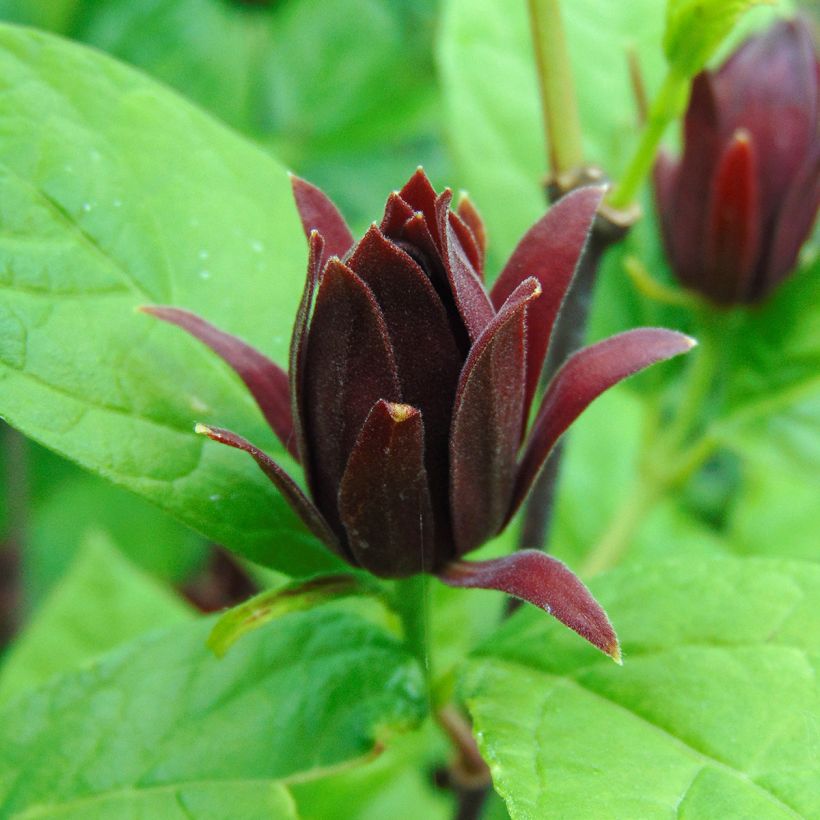

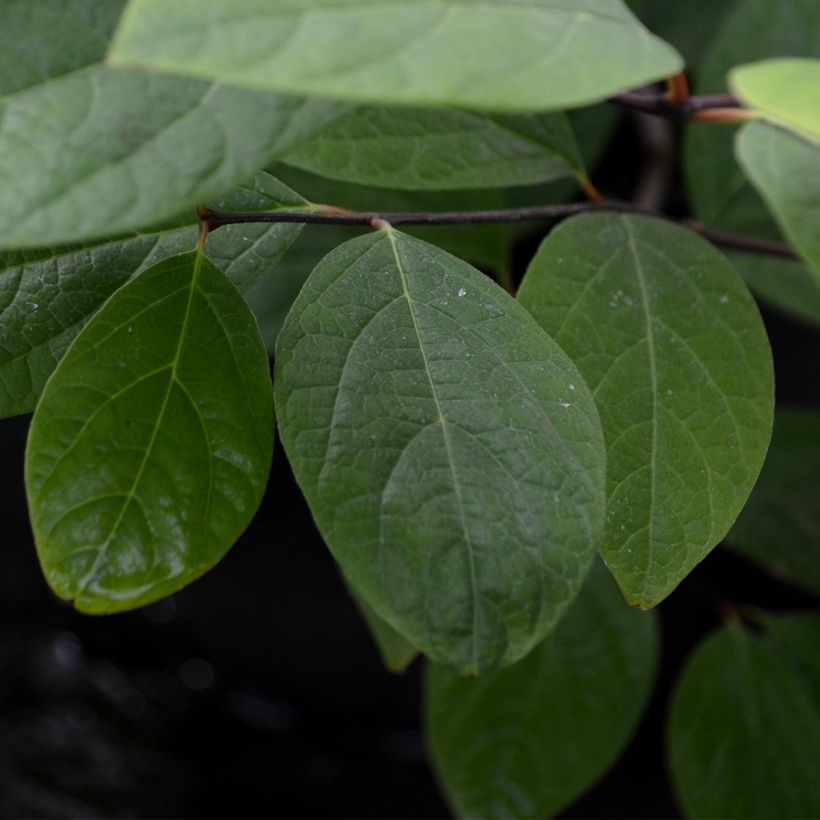



Plant habit
Flowering
Foliage
Botanical data
Calycanthus
floridus
Calycanthaceae
Carolina allspice, sweetshrub, strawberry bush, spicebush
North America
Other Calycanthus
View all →Planting and care
Plant in early spring or autumn with a spacing of 1.20 m (3.9 ft) in moist, rich, well-drained soil. Shelter it from winds. It prefers a very sunny and warm exposure in summer. Add compost at planting and mulch the soil to retain moisture. Propagation remains difficult. The simplest method is sowing or layering by burying the lower stems in fresh soil. Beware, once rooted, transplantation is delicate!
It can be planted in heather beds, as it likes acidic soil. However, pure ericaceous soil is a bit too poor for it: add compost at the base of this bush and keep the soil moist with mulch. Be sure to remove suckers if you do not want it to spread too much. Pruning should be done in late winter if necessary.
Planting period
Intended location
Care
-
, onOrder confirmed
Reply from on Promesse de fleurs
Similar products
Haven't found what you were looking for?
Hardiness is the lowest winter temperature a plant can endure without suffering serious damage or even dying. However, hardiness is affected by location (a sheltered area, such as a patio), protection (winter cover) and soil type (hardiness is improved by well-drained soil).

Photo Sharing Terms & Conditions
In order to encourage gardeners to interact and share their experiences, Promesse de fleurs offers various media enabling content to be uploaded onto its Site - in particular via the ‘Photo sharing’ module.
The User agrees to refrain from:
- Posting any content that is illegal, prejudicial, insulting, racist, inciteful to hatred, revisionist, contrary to public decency, that infringes on privacy or on the privacy rights of third parties, in particular the publicity rights of persons and goods, intellectual property rights, or the right to privacy.
- Submitting content on behalf of a third party;
- Impersonate the identity of a third party and/or publish any personal information about a third party;
In general, the User undertakes to refrain from any unethical behaviour.
All Content (in particular text, comments, files, images, photos, videos, creative works, etc.), which may be subject to property or intellectual property rights, image or other private rights, shall remain the property of the User, subject to the limited rights granted by the terms of the licence granted by Promesse de fleurs as stated below. Users are at liberty to publish or not to publish such Content on the Site, notably via the ‘Photo Sharing’ facility, and accept that this Content shall be made public and freely accessible, notably on the Internet.
Users further acknowledge, undertake to have ,and guarantee that they hold all necessary rights and permissions to publish such material on the Site, in particular with regard to the legislation in force pertaining to any privacy, property, intellectual property, image, or contractual rights, or rights of any other nature. By publishing such Content on the Site, Users acknowledge accepting full liability as publishers of the Content within the meaning of the law, and grant Promesse de fleurs, free of charge, an inclusive, worldwide licence for the said Content for the entire duration of its publication, including all reproduction, representation, up/downloading, displaying, performing, transmission, and storage rights.
Users also grant permission for their name to be linked to the Content and accept that this link may not always be made available.
By engaging in posting material, Users consent to their Content becoming automatically accessible on the Internet, in particular on other sites and/or blogs and/or web pages of the Promesse de fleurs site, including in particular social pages and the Promesse de fleurs catalogue.
Users may secure the removal of entrusted content free of charge by issuing a simple request via our contact form.
The flowering period indicated on our website applies to countries and regions located in USDA zone 8 (France, the United Kingdom, Ireland, the Netherlands, etc.)
It will vary according to where you live:
- In zones 9 to 10 (Italy, Spain, Greece, etc.), flowering will occur about 2 to 4 weeks earlier.
- In zones 6 to 7 (Germany, Poland, Slovenia, and lower mountainous regions), flowering will be delayed by 2 to 3 weeks.
- In zone 5 (Central Europe, Scandinavia), blooming will be delayed by 3 to 5 weeks.
In temperate climates, pruning of spring-flowering shrubs (forsythia, spireas, etc.) should be done just after flowering.
Pruning of summer-flowering shrubs (Indian Lilac, Perovskia, etc.) can be done in winter or spring.
In cold regions as well as with frost-sensitive plants, avoid pruning too early when severe frosts may still occur.
The planting period indicated on our website applies to countries and regions located in USDA zone 8 (France, United Kingdom, Ireland, Netherlands).
It will vary according to where you live:
- In Mediterranean zones (Marseille, Madrid, Milan, etc.), autumn and winter are the best planting periods.
- In continental zones (Strasbourg, Munich, Vienna, etc.), delay planting by 2 to 3 weeks in spring and bring it forward by 2 to 4 weeks in autumn.
- In mountainous regions (the Alps, Pyrenees, Carpathians, etc.), it is best to plant in late spring (May-June) or late summer (August-September).
The harvesting period indicated on our website applies to countries and regions in USDA zone 8 (France, England, Ireland, the Netherlands).
In colder areas (Scandinavia, Poland, Austria...) fruit and vegetable harvests are likely to be delayed by 3-4 weeks.
In warmer areas (Italy, Spain, Greece, etc.), harvesting will probably take place earlier, depending on weather conditions.
The sowing periods indicated on our website apply to countries and regions within USDA Zone 8 (France, UK, Ireland, Netherlands).
In colder areas (Scandinavia, Poland, Austria...), delay any outdoor sowing by 3-4 weeks, or sow under glass.
In warmer climes (Italy, Spain, Greece, etc.), bring outdoor sowing forward by a few weeks.






























